Low-Level Detection in Modern Product Safety
Product safety is crucial for manufacturers and consumers in today’s fast-paced consumer market. With the increasing complexity of product formulations and stringent safety regulations, identifying potential contaminants at low concentrations has become more critical than ever before. Low-level detection testing is vital in this endeavor, enabling manufacturers to detect harmful substances that could compromise product integrity and consumer health.
Low-level detection methods are employed to identify both desirable and undesirable analytes. Desirable analytes might include beneficial minerals or botanical extracts in health and beauty products. However, the real challenge often lies in identifying unwanted contaminants, such as heavy metals or organic compounds, which can be present in trace amounts. Companies can ensure their products meet safety standards by employing advanced detection techniques, thus maintaining consumer trust and regulatory compliance.
Understanding the Science Behind ICP-MS, UPLC-MS, and GC-MS
The cornerstone of effective low-level detection is the use of sophisticated analytical technologies, such as Inductively Coupled Plasma Mass Spectrometry (ICP-MS), Ultra-Performance Liquid Chromatography Mass Spectrometry (UPLC-MS), Triple Quad High- Performance Liquid Chromatography Mass Spectrometry (HPLC-MS/MS), Gas Chromatography-Mass Spectrometry (GC-MS). Each technology offers unique advantages in identifying and quantifying trace elements and compounds.
ICP-MS is particularly effective for detecting metals and several non-metals at low concentrations. It is capable of performing multi-element analysis, making it ideal for environmental testing and pharmaceutical quality control. UPLC-MS, on the other hand, excels in separating and analyzing compounds in complex mixtures, providing high resolution and sensitivity. This makes it a preferred choice for pharmaceutical and food safety testing. GC-MS combines the features of gas chromatography and mass spectrometry to identify substances within a test sample. It is widely used for detecting volatile and semi-volatile organic compounds, such as pesticides and hydrocarbons.
Identifying Common Contaminants in Consumer Products
Consumer products include everything from cosmetics and personal care items to pharmaceuticals and dietary supplements. Each category is susceptible to contamination from multiple sources, necessitating rigorous low-level detection testing.
For example, contaminants such as 1,4-dioxane can inadvertently be introduced into cosmetics during manufacturing processes or through raw materials. This compound, often a by-product of certain chemical reactions, poses health risks even at low concentrations. Similarly, heavy metals like lead and arsenic may be present in raw materials or packaging materials and pose common concerns in cosmetics and pharmaceuticals.
Dietary supplements are not immune, either. While beneficial, botanical extracts can sometimes contain trace amounts of pesticides or other agricultural chemicals. By utilizing state-of-the-art detection methods, manufacturers can identify these contaminants during product development, thereby ensuring that only safe and high-quality products reach the consumer.
The Role of Low-Level Detection in Regulatory Compliance
Regulatory bodies worldwide impose strict guidelines to ensure that consumer products are safe for use. Compliance with these regulations is non-negotiable for manufacturers who aim to maintain market access and consumer trust. Low-level detection testing is pivotal to regulatory compliance, as it helps identify and quantify contaminants that could otherwise go unnoticed.
For instance, the U.S. Food and Drug Administration (FDA) mandates rigorous testing for pharmaceuticals and food products to ensure they are free from harmful substances. Similarly, the cosmetics industry must adhere to guidelines set by organizations like the European Union’s REACH regulation, which restricts the use of certain hazardous substances. By leveraging advanced detection technologies, companies can proactively address potential compliance issues before they escalate, thus avoiding costly recalls and legal ramifications.
Challenges and Innovations in Detection Methodologies
Despite advancements in detection technologies, challenges remain in low-level detection. One primary hurdle is the ever-evolving nature of contaminants, which requires continuous updates to testing methodologies and equipment. Additionally, the complexity of modern formulations can sometimes interfere with detection accuracy, necessitating the development of more sophisticated analytical techniques.
Innovations in this field are continually emerging, driven by the need for more sensitive, accurate, and faster detection methods. Advances in machine learning and artificial intelligence are being integrated into analytical processes, enhancing the ability to interpret data and predict potential contamination issues. Additionally, equipment miniaturization and the development of portable testing devices are making it easier to perform on-site and even field testing, providing immediate insights into product safety.
Implications of Advanced Detection Techniques in the Industry
As technology advances, the future of low-level detection holds promising implications for the consumer product industry. The ability to detect contaminants at even lower levels will lead to safer products and more informed consumers. This heightened scrutiny will benefit consumer safety and drive innovation within the industry as manufacturers strive to develop cleaner, more sustainable products.
Additionally, as global regulations become increasingly stringent, the demand for robust low-level detection capabilities will only grow. Companies that invest in cutting-edge detection technologies and methodologies will be better positioned to meet these demands, gaining a competitive edge in the market. In the long term, integrating these advanced techniques will foster a culture of transparency and accountability in product safety, ultimately leading to greater consumer confidence and trust.
In conclusion, low-level detection testing is indispensable to modern product safety. By leveraging advanced technologies like ICP-MS, UPLC-MS, GC-MS, and LC-MS/MS manufacturers can effectively identify and mitigate potential contaminants, ensuring their products meet the highest safety standards. As the industry evolves, the advancement of detection methodologies will play a pivotal role in safeguarding consumer health and fostering innovation.
To get started with low-level detection testing for your next product, contact us today!

